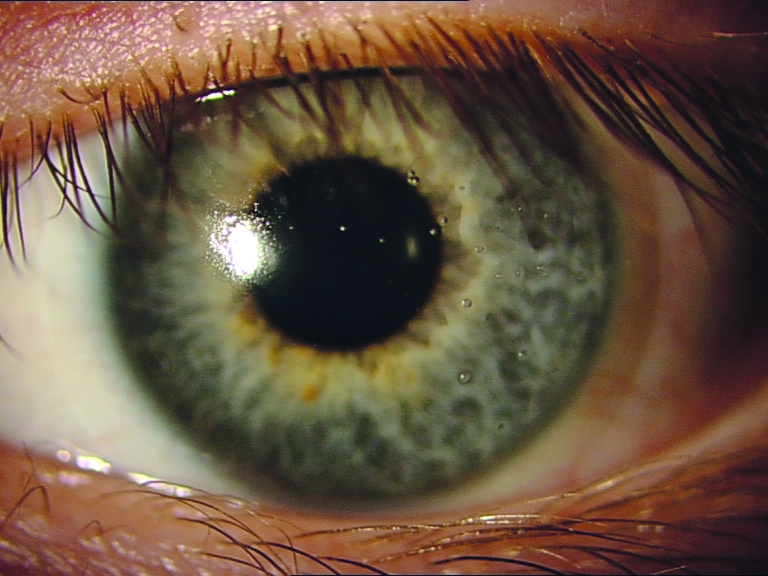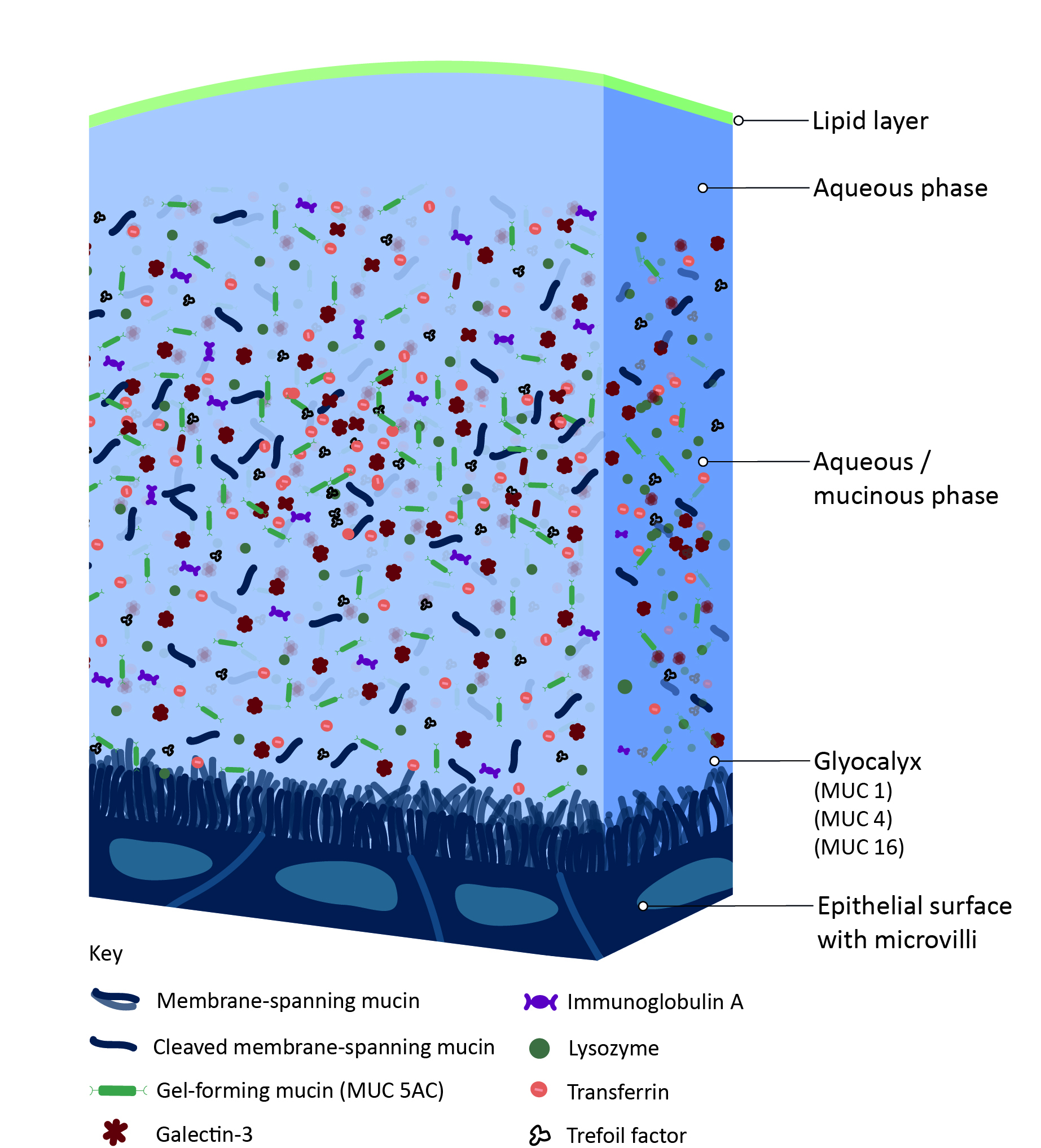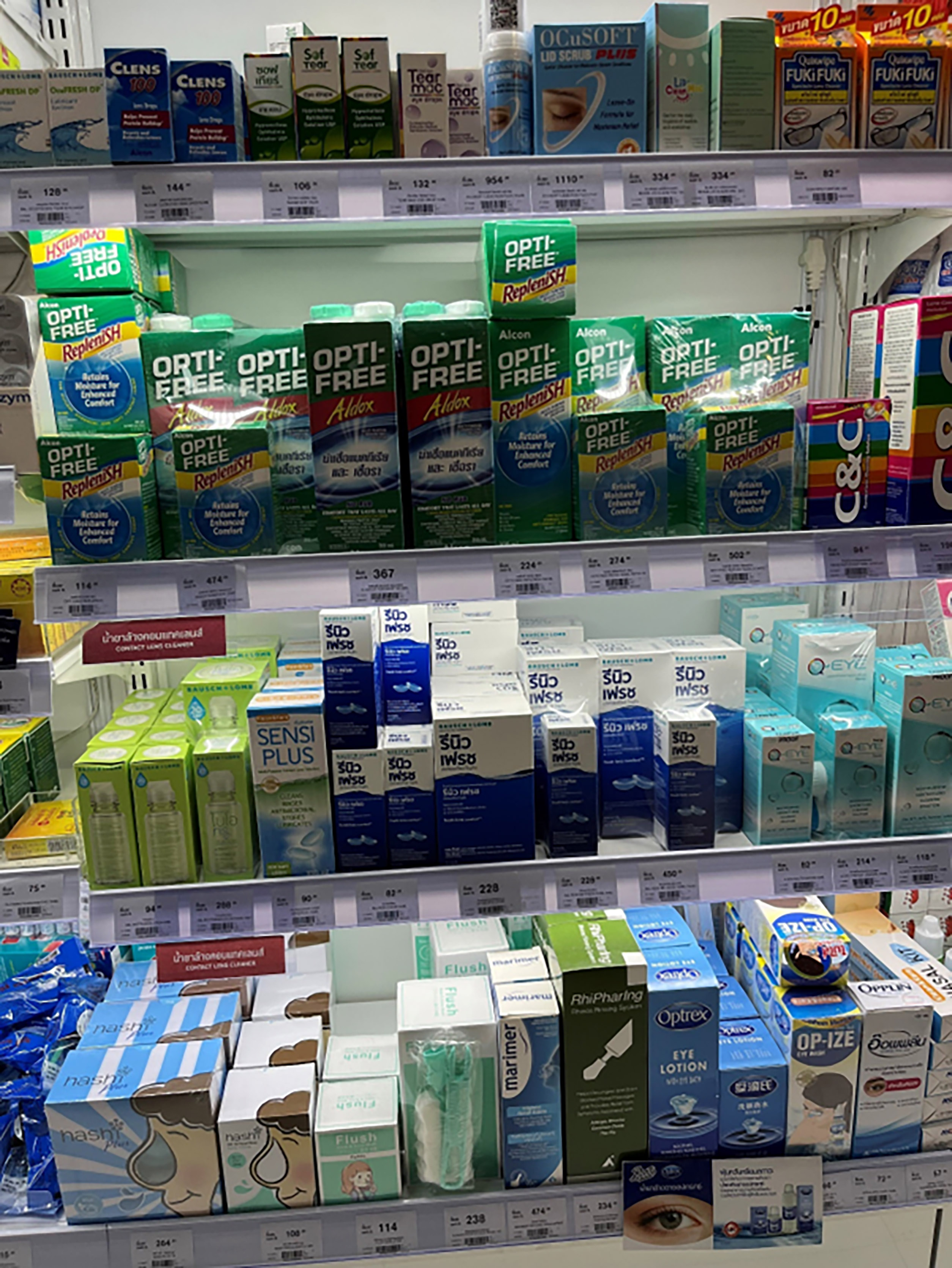In Optician 07.04.23, Wendy Sethi offered an overview of the key points from the BCLA CLEAR publication, which focused on the interactions between lens materials, care products and the tear film, looking at the biochemistry and compatibility of the various elements involved in successful contact lens wear. Two important areas discussed, which are both of clinical relevance when undertaking an aftercare assessment, were the provision of oxygen to the cornea via a contact lens and the wettability of the contact lens material during wear.
Oxygen permeability
Contact lens materials have evolved over time from polymethyl methacrylate (PMMA) to 2-hydroxyethyl methacrylate (HEMA), to silicone hydrogel (SiHy) in the search for improved oxygen permeability. Silicone combines with oxygen in siloxane, allowing oxygen to pass through the polymer. The main issue with including silicone or fluorine in contact lens materials is that this causes hydrogel lenses to be more hydrophobic, affecting deposition onto the lens surface. Lysozyme and albumin tend to adsorb to these newer materials less than they do to HEMA, but cholesterol deposits onto silicone hydrogel lenses more (figure 1).

Wettability
Wettability refers to the potential of a liquid to spread and maintain contact with a surface, thus wettability in this context refers to how much of the lens surface is covered by the tear film. The addition of other substances, either on the lens surface or in the associated liquid, will affect the wettability of the lens. Surfactants (surface active agents) lower the surface tension of a liquid, thereby increasing its ability to spread and penetrate. Factors affecting the wettability of a contact lens material include the chemical properties of the contact lens constituents, how it is manufactured, what surface coatings are added and the inclusion of any wetting agents. The initial wettability of a reusable lens may change when exposed to lens care solutions and tear film components.
According to the original BCLA CLEAR paper, ‘Maintenance of contact lens surface wettability becomes important because surface properties such as wettability can change during wear, affecting the wearer’s comfort.’1 The paper goes on to cite several factors that may affect wettability of worn contact lenses. These include:
- Individual tear composition (figure 2)
- Blinking and related tear evaporation
- Ocular temperature
- Types of lens materials worn
- Duration of lens wear
- Lens replacement schedule
Figure 2: Structure of the tear film and ocular surface

Importantly, the paper goes on to state: ‘Despite new research that has examined whether contact lens wetting is associated with comfort during wear, no clear association has been found.’
As Sethi points out: ‘In the absence of more data on this subject, eye care practitioners should continue to evaluate each patient’s situation independently regarding factors such as contact lens material, wetting drops and lens care solutions.’
This exercise aims to explore how changing a contact lens material for one reason, such as improving oxygen transmissibility, may have an impact upon wettability. You are encouraged to air your views as to whether you feel this is of any significance based on what we know.
Case Scenario
A patient attends your practice for the first time. They are new to the area and know that, as a full-time contact lens wearer, they are due an aftercare. Their last aftercare was one year ago and they report that, at that time, no problems or concerns had been identified by their last eye care practitioner.
They are currently wearing monthly replacement lenses and use a multipurpose solution (MPS). The exact nature of their lenses is unclear, though the patient admitted they had previously been advised to keep daily wear time to eight hours maximum and to have ‘one day of rest a week’. The MPS used varied according to whichever supermarket brand they happened to see (figure 3).
Figure 3: Different contact lens care systems available at Bangkok airport which may be purchased whilst travelling, usually with the contact lens wearer’s ECP being unaware of the products being used. (Image from Neil Retallic)

The patient professed to keeping to the time limits of wear previously recommended.
Consider the following questions for your discussions:
- What questions would you ask to check on compliance with lens care and wearing habits?
- What signs might you see to suggest that the patient’s current lenses were not allowing adequate oxygen to the cornea?
- You decide to change the lenses to a monthly replacement silicone hydrogel material. Might this affect the wettability of the lenses and, if so, how might you confirm this in future?
Interactive CPD Instructions
In order to be able to log one provider-led interactive CPD point to your MyCPD account, this is what you need to do:
- Make sure you have read the article: BCLA CLEAR – Contact lens wettability, cleaning, disinfection and interactions with tears by Wendy Sethi.
- Arrange a time to undertake a discussion on the subject with a similarly qualified registrant; another optometrist or dispensing optician.
- Read the case scenario and questions (above) and use them as the basis for the discussion with your colleague. Note, the discussion needs to address each of the questions outlined above and must be for longer than 10 minutes.
- When finished, you then need to send an email to ‘opticiancpd@markallengroup.com’ as follows;
- Subject box should state ‘CLEAR Interactive 7’
- Please state your name and GOC number
- Please state the name and GOC number of the person you discussed the matter with
- Please confirm you had read the source material
- Please include a summary of your discussion, explaining your views and thoughts on each of the three discussion questions
- Each submission will be read individually and, where needed, feedback will be given directly. Where the submission meets a required standard, you will receive an email confirming this which you can then use as evidence of completion allowing you to log one distance learning interactive CPD point.
- A summary of the responses and discussions will appear in a future issue of Optician with comment from the authors.
- Neil Retallic is President of the BCLA.
Reference
- Willcox M, Keir N, Maseedupally V, Masoudi S, McDermott A, Mobeen R, Purslow C, Santodomingo-Rubido J, Tavazzi S, Zeri F, Jones L. CLEAR - Contact lens wettability, cleaning, disinfection and interactions with tears. Contact Lens & Anterior Eye, 2021 Apr;44(2):157-91
